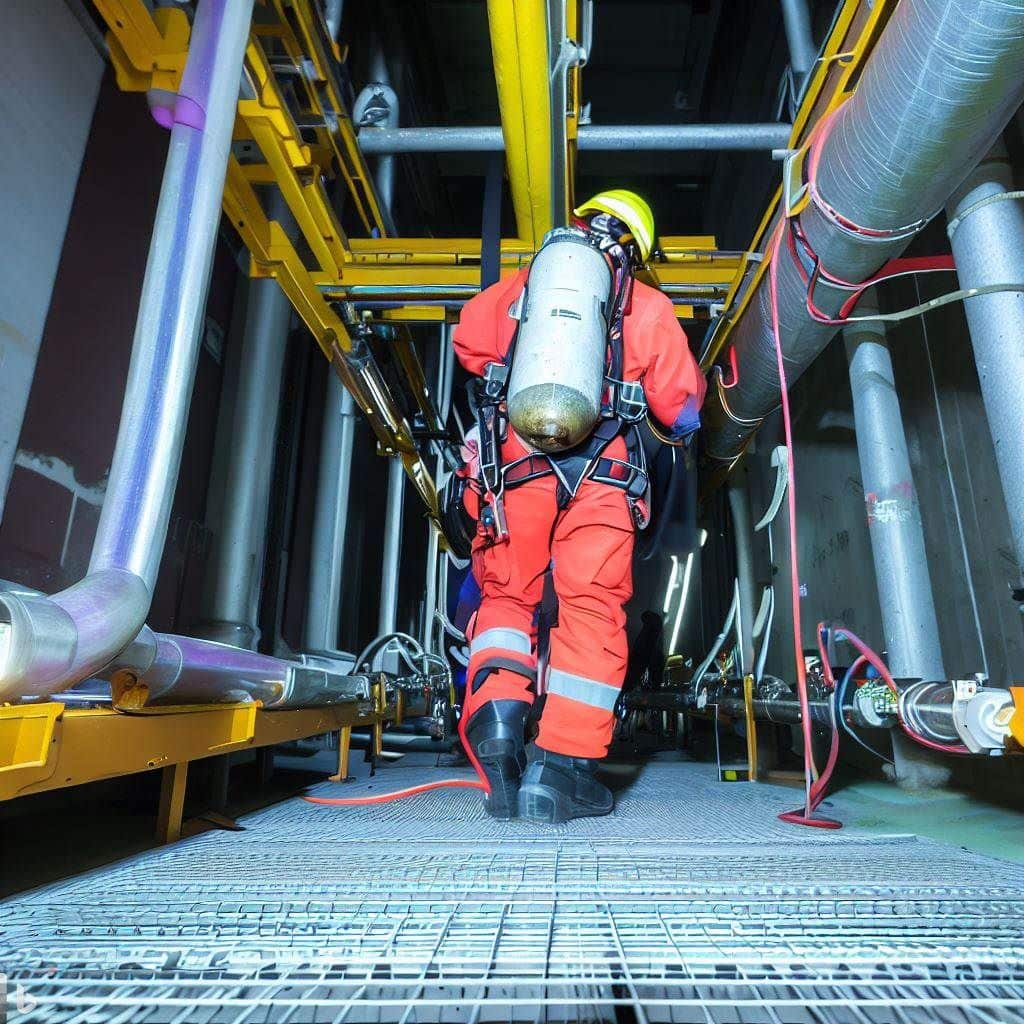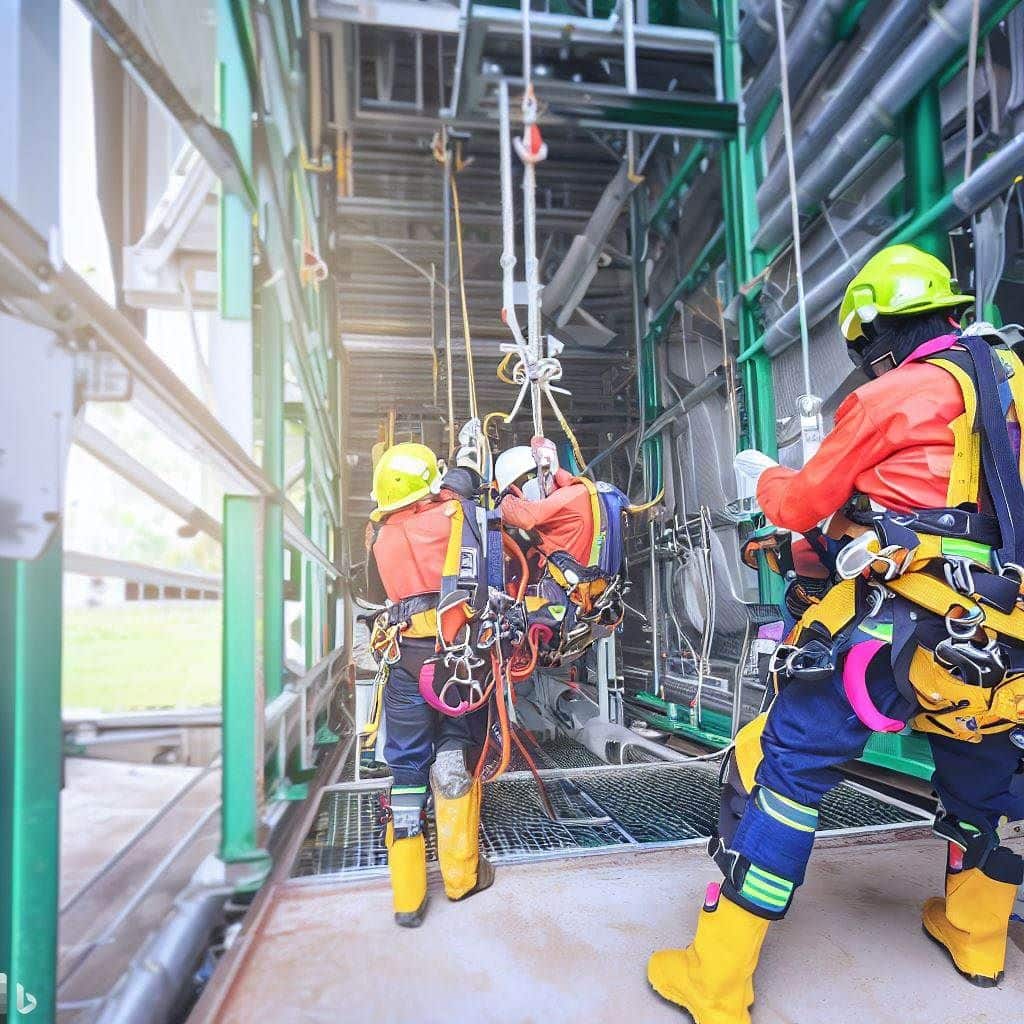Understanding and Implementing Confined Space Retrieval System Requirements: Best Practices for Compliance
Confined spaces pose a unique set of challenges and hazards to workers. By understanding and implementing confined space retrieval system requirements, employers can better protect their employees and ensure compliance with regulatory standards.
This article will explore the various aspects of confined space retrieval systems and provide best practices for compliance with these requirements. From identifying confined spaces and associated hazards to proper equipment selection and maintenance, this comprehensive guide will be a valuable resource for employers and safety professionals.
Identifying confined spaces and associated hazards
A confined space is an area not designed for continuous occupancy, has limited access or egress, and has the potential for hazardous substances or dangerous conditions to exist. Examples of confined spaces include storage tanks, silos, sewers, and tunnels. These spaces can pose various hazards, such as toxic gases, engulfment, or limited oxygen availability.
To effectively mitigate these hazards, it is crucial to identify and assess the risks associated with each confined space. The first step in identifying confined spaces is to conduct a thorough facility walkthrough. During this process, it is important to consider factors such as the size and shape of the space, the presence of hazardous substances, and the potential for hazardous atmospheres to develop.
Once confined spaces have been identified, a hazard assessment should be completed to determine the specific risks associated with each space. This information will be essential in developing a comprehensive confined space entry and retrieval plan.

Understanding OSHA regulations for confined spaces
The Occupational Safety and Health Administration (OSHA) has established regulations to protect workers who enter confined spaces. These regulations, known as the Confined Spaces Standard (29 CFR 1910.146), outline the requirements for a comprehensive confined space program.
Key elements of the standard include hazard identification and assessment, permit-required confined space procedures, training and certification for confined space personnel, and the use of appropriate safety equipment. In addition to federal OSHA regulations, some states have confined space regulations, which may be more stringent than the federal standard.
Employers must familiarize themselves with federal and state regulations and ensure their confined space program complies with all applicable requirements. Failure to comply with these regulations can result in serious consequences, including fines, penalties, and an increased risk of worker injury or fatality.
Key components of a confined space retrieval system
A confined space retrieval system is critical to any confined space entry and retrieval plan. These systems are designed to facilitate the safe entry, work, and retrieval of personnel from confined spaces. Key components of a confined space retrieval system include:
- Anchorage points: Secure anchorage points are essential for attaching retrieval equipment, such as winches and hoists. These points must be capable of supporting the weight of the worker and any additional loads that may be placed on the system during a rescue operation.
- Body support: A full-body harness is the preferred method of body support for workers entering confined spaces. These harnesses distribute the forces experienced during a fall or rescue operation across the entire body, reducing the risk of injury.
- Connecting devices: Connecting devices, such as carabiners and snap hooks, connect the worker’s harness to the retrieval system. These devices must be compatible with the system’s other components and capable of withstanding the forces generated during a rescue operation.
- Retrieval equipment: Depending on the specific requirements of the confined space, retrieval equipment such as winches, hoists, or rope systems may be necessary. This equipment must be designed to facilitate the safe and efficient retrieval of personnel from the confined space.
Developing a confined space entry and retrieval plan
A comprehensive confined space entry and retrieval plan is essential for ensuring the safety of workers who enter confined spaces. This plan should address all aspects of the confined space entry process, from hazard identification and assessment to equipment selection and maintenance. Key elements of a confined space entry and retrieval plan include:
- Hazard identification and assessment: A thorough hazard assessment should be completed for each confined space at the facility. This assessment should identify the specific hazards associated with the space, as well as any control measures that will be necessary to mitigate these hazards.
- Permit-required confined space procedures: Permit-required confined spaces present one or more serious hazards, such as the potential for a hazardous atmosphere or the risk of engulfment. A permit system should be established to control access to these spaces and ensure appropriate safety precautions are in place.
- Training and certification requirements: All confined space entry and retrieval personnel must be properly trained and certified. This includes training in hazard recognition, the use of safety equipment, and proper entry and retrieval procedures.
- Equipment selection and maintenance: The appropriate safety equipment must be selected and maintained for each confined space entry operation. This includes retrieval systems, respiratory protection, and other personal protective equipment.
Training and certification requirements for confined space personnel
Proper training and certification ensure workers’ safety in confined spaces. OSHA requires that all personnel involved in confined space entry and retrieval operations be properly trained in the following areas:
- Hazard recognition: Workers must be able to identify and assess the hazards associated with confined spaces, such as toxic gases, engulfment, or limited oxygen availability.
- Safety equipment use: Personnel must be trained in the proper use and maintenance of safety equipment, such as retrieval systems, respiratory protection, and personal protective equipment.
- Entry and retrieval procedures: Workers should be familiar with the specific entry and retrieval procedures for each confined space at their facility. This includes permit-required confined space procedures and any additional safety precautions that may be necessary.
In addition to OSHA-required training, it is recommended that confined space personnel also receive certification through a recognized training organization. This certification can help ensure workers have the knowledge and skills to safely perform confined space entry and retrieval operations.
Equipment selection and maintenance for confined space retrieval
Selecting and maintaining the appropriate safety equipment is critical for ensuring the safety of workers who enter confined spaces. The following considerations should be taken into account when selecting and maintaining confined space retrieval equipment:
- Compatibility: All components of the retrieval system, including anchorage points, body support, connecting devices, and retrieval equipment, must be compatible. Incompatible components can compromise the system’s integrity and increase the risk of injury or fatality.
- Load capacity: The retrieval system must be capable of supporting the weight of the worker and any additional loads that may be placed on the system during a rescue operation. This includes the weight of the worker’s protective equipment and any tools or materials required for the task.
- Inspection and maintenance: Regular inspection and maintenance of confined space retrieval equipment is essential for ensuring its proper function and reducing the risk of equipment failure. Inspections should be conducted before each use, and any damaged or worn components should be replaced immediately.
- Training: Proper training in using and maintaining confined space retrieval equipment is critical for ensuring the safety of workers who enter confined spaces. This includes training in the proper selection, inspection, and maintenance of retrieval equipment and how to use the equipment during entry and retrieval operations safely.
Best practices for confined space retrieval system compliance
Implementing best practices for confined space retrieval system compliance can help to protect workers and ensure adherence to regulatory standards. Some of these best practices include:
- Developing a comprehensive confined space program: A comprehensive confined space program should address all aspects of confined space entry and retrieval, from hazard identification and assessment to training and certification requirements.
- Conducting regular facility walkthroughs: Regular facility walkthroughs can help to identify new confined spaces and hazards that may have developed since the last assessment.
- Establishing a permit system for permit-required confined spaces: A permit system can help to control access to permit-required confined spaces and ensure that appropriate safety precautions are in place.
- Providing ongoing training and certification for confined space personnel: Regular training and certification can help ensure that workers have the necessary knowledge and skills to perform confined space entry and retrieval operations safely.
- Implementing a robust equipment inspection and maintenance program: Regular inspection and maintenance of confined space retrieval equipment can help to prevent equipment failure and reduce the risk of injury or fatality.

Case studies: Successful implementation of confined space retrieval systems
The successful implementation of confined space retrieval systems can greatly improve worker safety and ensure compliance with regulatory standards. The following case studies highlight the benefits of implementing effective confined space retrieval systems:
- Case Study 1: A chemical manufacturing facility implemented a comprehensive confined space program, including installing a robust retrieval system to enter storage tanks. As a result, the facility experienced a significant reduction in confined space-related incidents and improved overall worker safety.
- Case Study 2: A wastewater treatment plant conducted a thorough hazard assessment of its confined spaces and implemented a permit system for controlling access to these areas. With the addition of a confined space retrieval system, the plant improved worker safety and ensured compliance with regulatory standards.
Conclusion: Ensuring safety and compliance in confined spaces
Understanding and implementing confined space retrieval system requirements is essential for ensuring the safety of workers who enter confined spaces and for maintaining compliance with regulatory standards.
Employers can protect their employees and reduce the risk of confined space-related incidents by developing a comprehensive confined space program, providing proper training and certification, and implementing a robust equipment inspection and maintenance program. Following the best practices outlined in this article will help ensure your facility remains a safe and compliant workplace for all employees.
Frequently Asked Questions:
What is a confined space?
A confined space is an area not designed for continuous occupancy, has limited access or egress, and has the potential for hazardous substances or dangerous conditions to exist.
What are the key components of a confined space retrieval system?
Key components of a confined space retrieval system include anchorage points, body support, connecting devices, and retrieval equipment.
What are the OSHA regulations for confined spaces?
The Confined Spaces Standard (29 CFR 1910.146) outlines the requirements for a comprehensive confined space program, including hazard identification and assessment, permit-required confined space procedures, training and certification for confined space personnel, and the use of appropriate safety equipment.
What training and certification are required for confined space personnel?
OSHA requires that all personnel involved in confined space entry and retrieval operations be properly trained in hazard recognition, the use of safety equipment, and proper entry and retrieval procedures. In addition to OSHA-required training, it is recommended that confined space personnel also receive certification through a recognized training organization.
What is the importance of equipment selection and maintenance for confined space retrieval?
Selecting and maintaining the appropriate safety equipment is critical for ensuring the safety of workers who enter confined spaces. Proper equipment selection and maintenance can help to prevent equipment failure and reduce the risk of injury or fatality.
